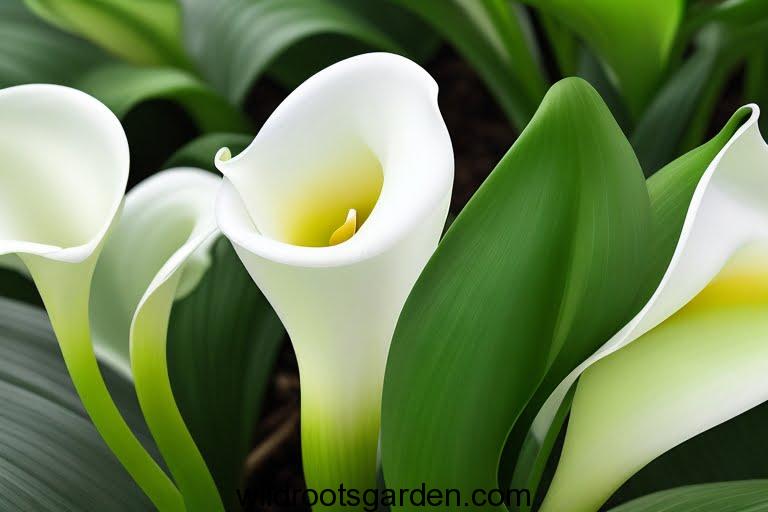Calla Lily Blooms Turning Green. The exquisite and alluring blooms of calla lilies are renowned for lending an air of refinement to any garden or floral arrangement. Nevertheless, when these lovely blooms begin to turn green rather than keeping their vivid hues, it might be worrying. In this post, we’ll examine the causes of calla lily blooms turning green and offer practical advice for preventing and resolving the problem.
JUMP TO TOPIC
- 1 Understanding Calla Lilies
- 2 The Beauty of Calla Lily Blooms
- 3 Reasons for Calla Lily Blooms Turning Green
- 4 1. Lack of sunlight
- 5 2. Overwatering
- 6 3. Nutritional deficiencies
- 7 4. Pest infestation
- 8 5. Disease or infection
- 9 Prevention and Care Tips
- 10 Providing adequate sunlight
- 11 Proper watering practices
- 12 Fertilizing and nourishing the plant
- 13 Protecting against pests and diseases
- 14 Troubleshooting Green Calla Lily Blooms
- 15 Adjusting sunlight exposure
- 16 Adjusting watering frequency
- 17 Correcting nutrient imbalances
- 18 Treating pests and diseases
- 19 FAQs
Understanding Calla Lilies
Let’s first gain a fundamental understanding of these alluring flowers before we investigate the phenomenon of calla lily blooms turning green. Scientifically referred to as Zantedeschia, calla lilies are African natives that are prized for their trumpet-shaped blossoms and long, glossy leaves. They are available in a variety of hues, such as white, yellow, pink, and even deep purple. These stunning blooms are frequently linked to grace, innocence, and beauty.
The Beauty of Calla Lily Blooms
Calla lilies are prized for their magnificent blooms, which seductively draw attention to themselves. They are a favorite among flower enthusiasts because of their distinctive shape and velvety feel. When calla lilies are fully bloomed, they provide a spectrum of dazzling colors that can lighten any setting. But it frequently happens that these blossoms become green and lose their original color, which leaves gardeners baffled and eager to find a remedy.
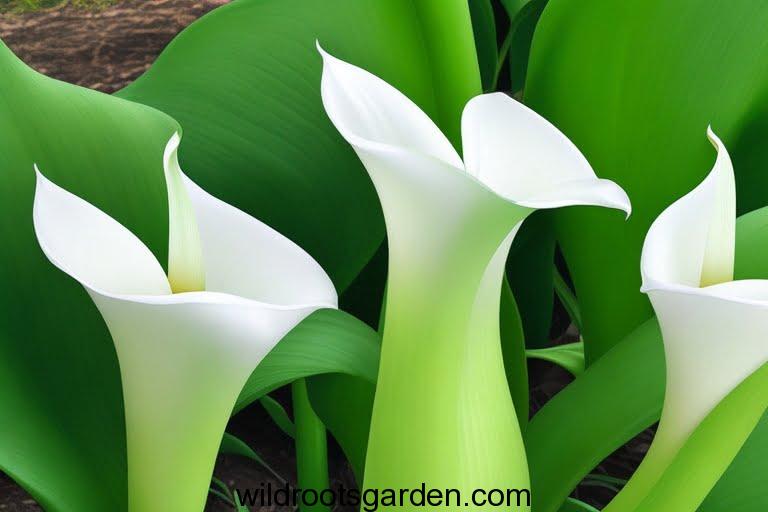
Reasons for Calla Lily Blooms Turning Green
The emergence of green calla lily blossoms can be caused by a variety of elements. In order to successfully address the problem, it is imperative to understand these factors. Let’s examine the most frequent causes of this hue change:
1. Lack of sunlight
Bright, filtered sunshine is ideal for calla lilies. The pigments in the blossoms may fade and turn green if they don’t receive enough sunlight. Your calla lilies may have changed color as a result of being placed in a darkened area or receiving little sunlight.
2. Overwatering
When caring for calla lilies, gardeners frequently overwater them. Although they are vulnerable to root rot if the soil becomes wet, these plants enjoy moist soil. The growth of green flowers can result from too much wetness, which can interfere with the plant’s ability to absorb nutrients.
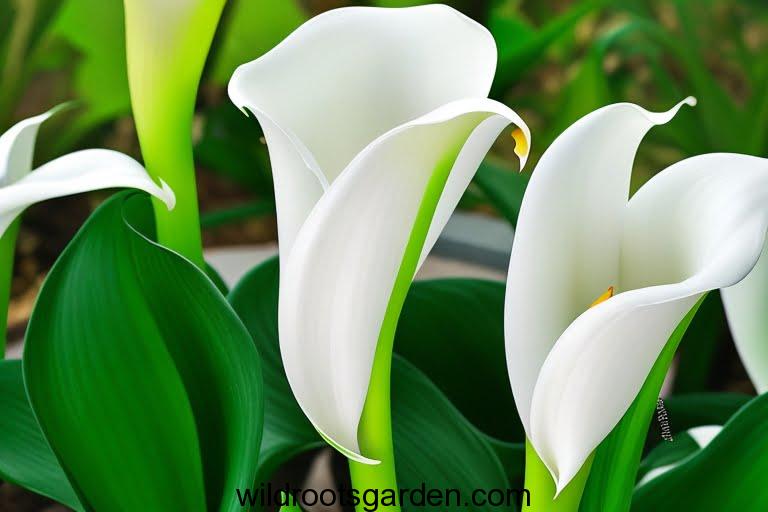
3. Nutritional deficiencies
For calla lilies to continue growing healthily and producing brilliant blooms, they need a balanced and sufficient supply of nutrients. The capacity of the plant to produce vibrant flowers can be impacted by nutritional inadequacies, notably a deficiency in vital elements like nitrogen, phosphorus, or magnesium. Blooms that are green may be a sign of this deficit.
4. Pest infestation
Aphids and mites, for example, can infest calla lilies and harm their blossoms. These insects damage and deform the plant by feeding on its tissues. Pest infestations can cause anomalies such as green flowers on your calla lilies.
5. Disease or infection
Calla lilies are prone to a number of illnesses and infections, including bacterial and fungal infections. The normal coloring process of the flowers may be hampered by certain illnesses, changing the color of the blooms. Take immediate action if your calla lilies show symptoms of illness or infection to limit additional harm.
Prevention and Care Tips
Even while it may be upsetting to notice Calla lily blooms turning green, there are preventative steps and maintenance advice you can do to make sure your plants keep their vivid hues. Think about the following ideas:
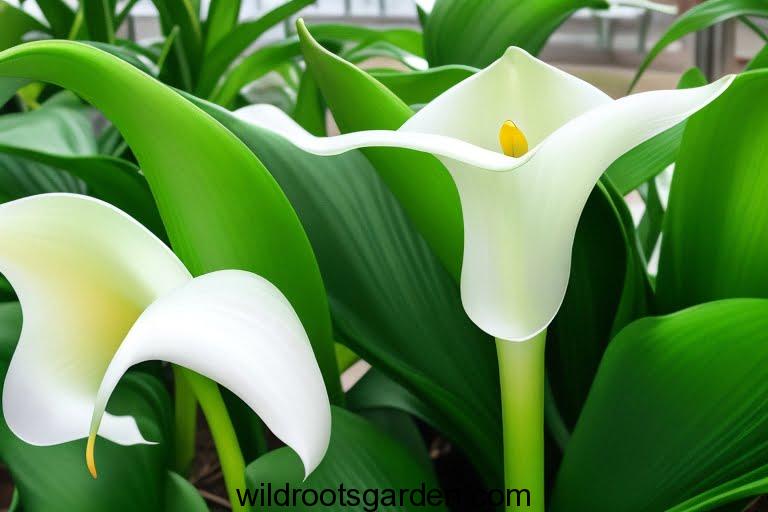
Providing adequate sunlight
Place your calla lilies in a location that gets plenty of sunshine, particularly in the early or late afternoon when the sun is not as strong. Make sure they receive six hours or more of indirect sunlight each day to encourage healthy pigmentation and colorful flowers.
Proper watering practices
Consistently water your calla lilies, but do not overwater. Before watering, check the soil’s moisture content to make sure it is just a little moist but not waterlogged. For healthy flowers and to avoid root rot, let the top inch of soil dry in between waterings.
Fertilizing and nourishing the plant
Use a balanced fertilizer made especially for flowering plants to feed your calla lilies. This will make sure they get the nutrients they need to support healthy blooms. For information on the proper dosage and frequency of application, refer to the fertilizer packaging.
Protecting against pests and diseases
Check your calla lilies frequently for evidence of pests or ailments. Take early action to treat the disease or eradicate the pests if you find any problems. To have as little of an effect on beneficial insects and the environment as possible, think about utilizing organic or environmentally responsible pest management techniques.
Troubleshooting Green Calla Lily Blooms
There are actions you can take if your calla lily blooms have already gone green in order to address the situation and promote the return of brilliant hues. Take into account the following diagnostic advice:
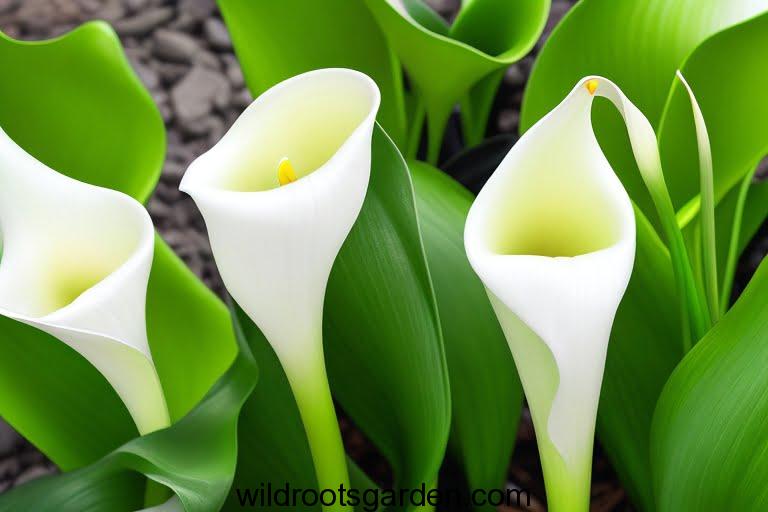
Adjusting sunlight exposure
Consider moving your calla lilies to a brighter place or adding more indirect light if they aren’t getting enough sunlight. To avoid shock, gradually acclimate them to brighter conditions.
Adjusting watering frequency
If green flowers are the result of overwatering, change your watering plan accordingly. Between waterings, let the soil somewhat dry out to ensure appropriate drainage. This will promote healthier flowers and prevent root rot.
Correcting nutrient imbalances
Use a balanced fertilizer containing the essential nutrients for calla lilies if nutrient deficits are the cause. Use the advice given and modify the fertilization plan as necessary.
Treating pests and diseases
If your calla lilies are being harmed by pests or illnesses, pinpoint the individual problem and use the proper treatments. For advice on managing pests and diseases, speak with a local gardening professional or consult reliable sources.
In conclusion, while it can be unsettling to see calla lily blooms, turn green, figuring out the root causes and taking preventative actions can help keep these lovely flowers looking beautiful. You can enjoy colorful and alluring calla lily blooms by giving them enough sunlight, using appropriate watering procedures, making sure they get the nutrition they need, and taking care of pests and diseases as soon as they appear. Keep an eye out for your plants’ requirements and give them the attention they require to grow healthily and produce beautiful blooms.

